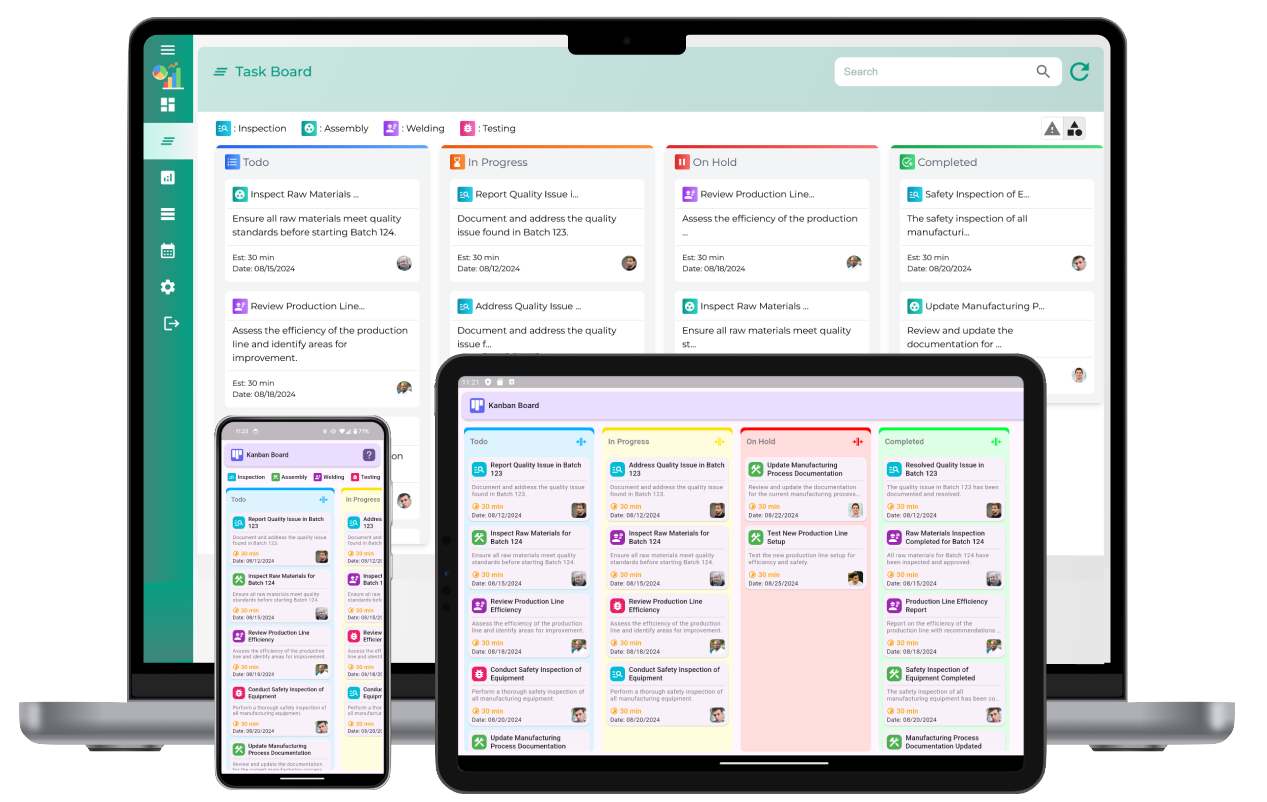In the quest for improved productivity and streamlined project management, digital Kanban boards have emerged as a valuable tool for teams and individuals alike. Originating from Toyota’s production system, Kanban has evolved from physical boards to sophisticated digital platforms that offer enhanced flexibility and functionality.

What Are Digital Kanban Boards?
Digital Kanban Boards are virtual versions of the traditional Kanban boards used in lean manufacturing and project management. They provide a visual representation of tasks and workflows, enabling teams to manage projects more efficiently. Tasks are represented as cards that move through various stages of a workflow, typically displayed as columns on the board. Digital Kanban boards enhance this concept with interactive and real-time features, making task management more dynamic and collaborative.
Benefits of Digital Kanban Boards
1. Enhanced Visibility: Digital Kanban boards provide a clear, visual overview of project status. This visibility allows team members to quickly assess the progress of tasks, identify potential bottlenecks, and ensure that everyone is aligned with the project goals.
2. Improved Task Management: By breaking tasks into manageable components and organizing them into stages, Digital Kanban Boards help teams prioritize and track work more effectively. This structured approach facilitates better planning and execution.
3. Real-Time Collaboration: Digital Kanban boards offer real-time updates and collaboration features. Team members can comment on tasks, attach files, and receive notifications about changes, ensuring that communication is streamlined and that everyone stays informed.
4. Remote Access: One of the significant advantages of digital Kanban boards is their accessibility from anywhere with an internet connection. This remote access supports distributed teams and allows for seamless collaboration regardless of geographical location.
5. Integration Capabilities: Many digital Kanban boards integrate with other tools and software, such as project management platforms, communication tools, and calendars. These integrations help centralize information and streamline workflows.
Key Features to Look For
When selecting a digital Kanban board tool, consider the following key features:
- Customizable Boards: The ability to create and tailor boards to fit your specific workflow is essential. Look for tools that allow you to add and modify columns, labels, and card types.
- Task Tracking and Management: Ensure the tool provides features for tracking task progress, setting deadlines, and assigning tasks to team members. Task management functionalities should align with your project needs.
- Real-Time Updates: Real-time updates are crucial for maintaining accuracy and ensuring that all team members have the latest information. Look for tools that offer live updates and notifications.
- Collaboration Features: Effective collaboration features, such as comment sections, file attachments, and team notifications, are vital for keeping everyone on the same page and facilitating communication.
- Reporting and Analytics: Reporting tools that provide insights into task performance and project progress can help with data-driven decision-making. Choose a tool that offers robust reporting capabilities.
- Mobile Accessibility: Mobile compatibility allows team members to access and update the Kanban board from their smartphones or tablets, providing flexibility and convenience.
Best Practices for Implementing Digital Kanban Boards
To maximize the benefits of digital Kanban boards, follow these best practices:
- Define Your Workflow: Clearly define the stages of your workflow and set up your Kanban board accordingly. This setup helps team members understand the process and track tasks effectively.
- Keep Tasks Detailed and Manageable: Break tasks into smaller, actionable items. This approach makes it easier to monitor progress and ensures that tasks are specific and achievable.
- Regularly Update the Board: Ensure that the Kanban board is updated regularly to reflect the current status of tasks. Regular updates help maintain accuracy and avoid misunderstandings.
- Encourage Team Participation: Encourage all team members to actively use the Kanban board, update tasks, and participate in discussions. Active engagement helps improve communication and collaboration.
- Review and Adjust Workflows: Periodically review your workflows and make adjustments as needed. This practice helps address any inefficiencies and ensures that the Kanban board continues to meet your team’s needs.
Conclusion
Digital Kanban Boards offer a powerful solution for enhancing productivity and managing projects effectively. By providing visual clarity, real-time updates, and collaborative features, these tools help teams streamline their workflows and achieve their goals. By selecting the right digital Kanban board tool and adhering to best practices, organizations can leverage the full potential of Kanban methodology to drive success and improve project outcomes.